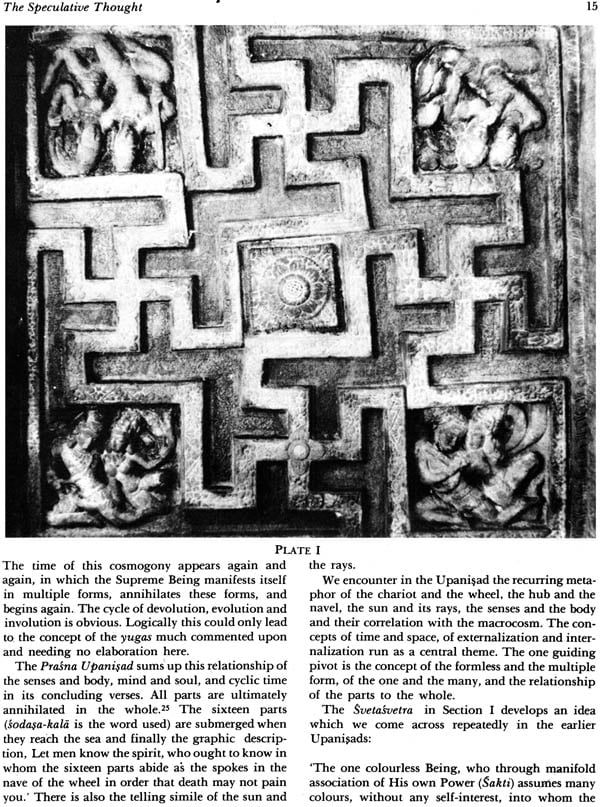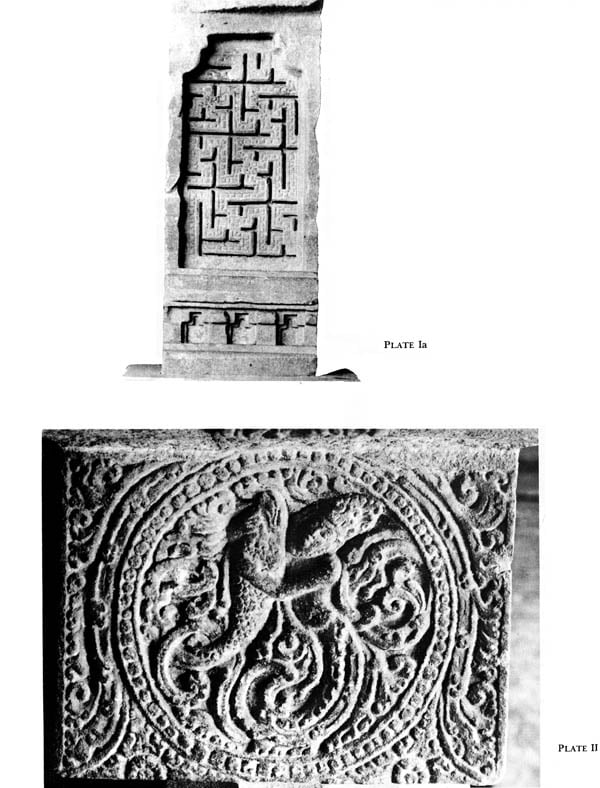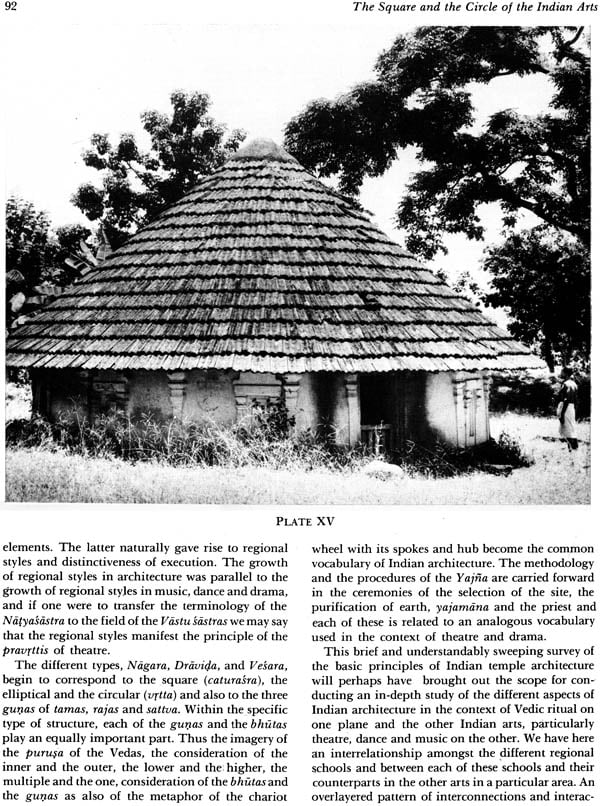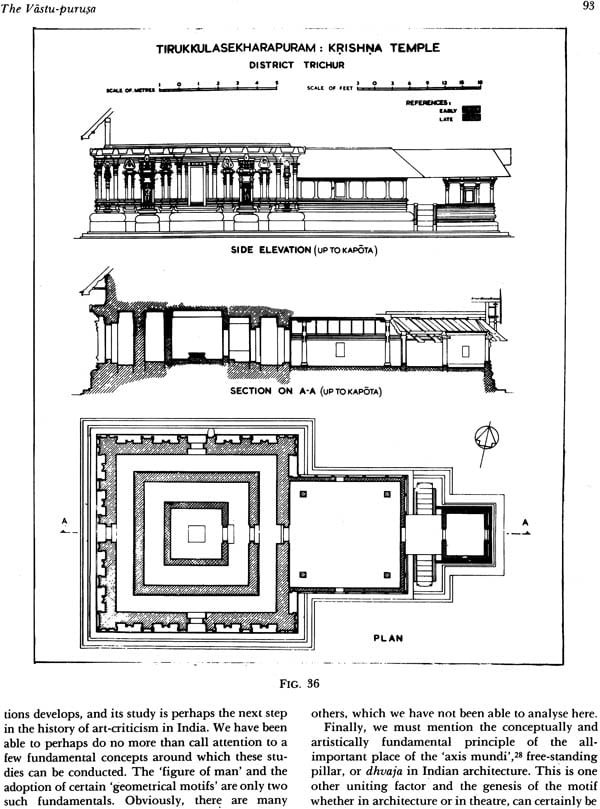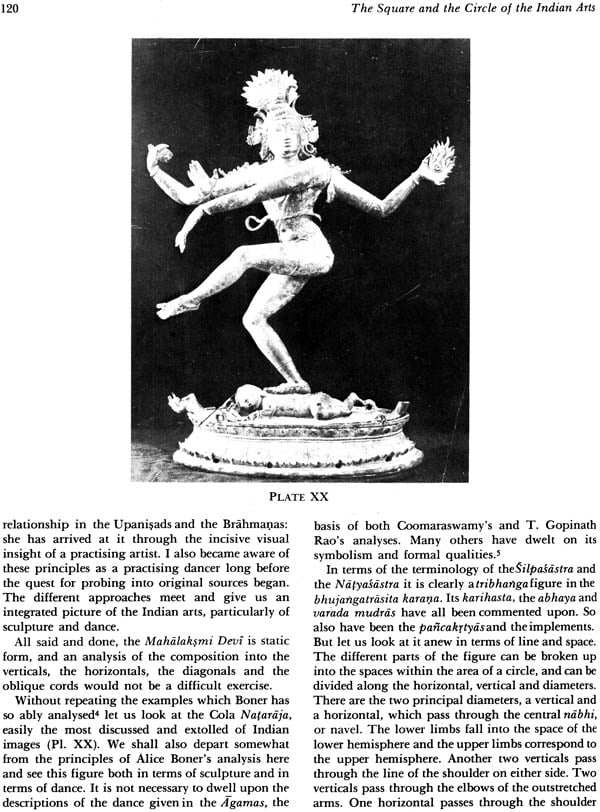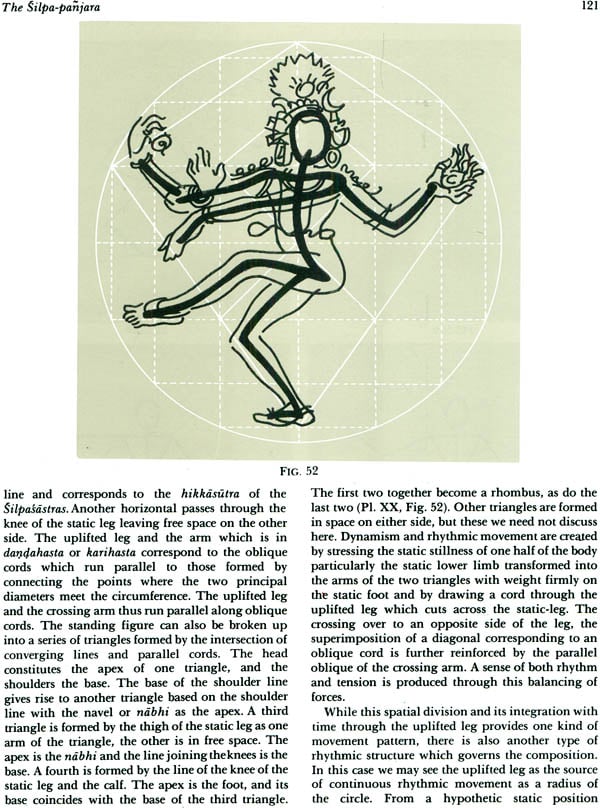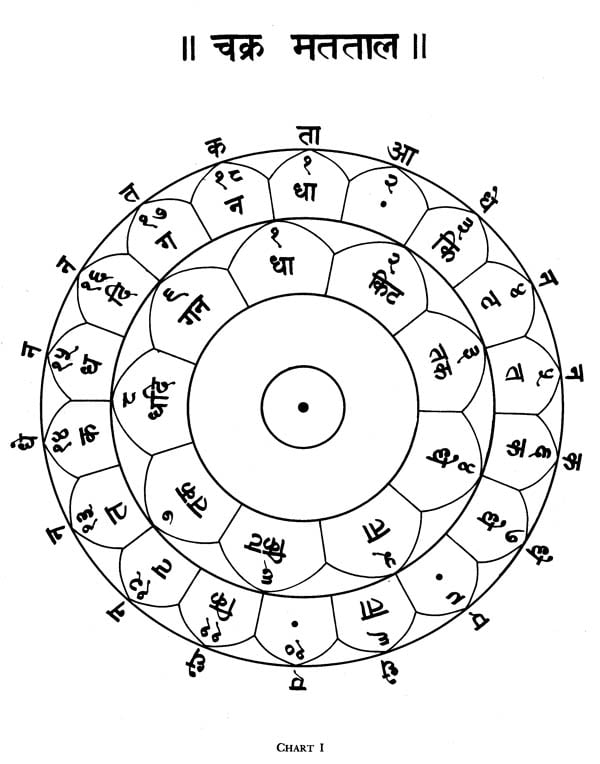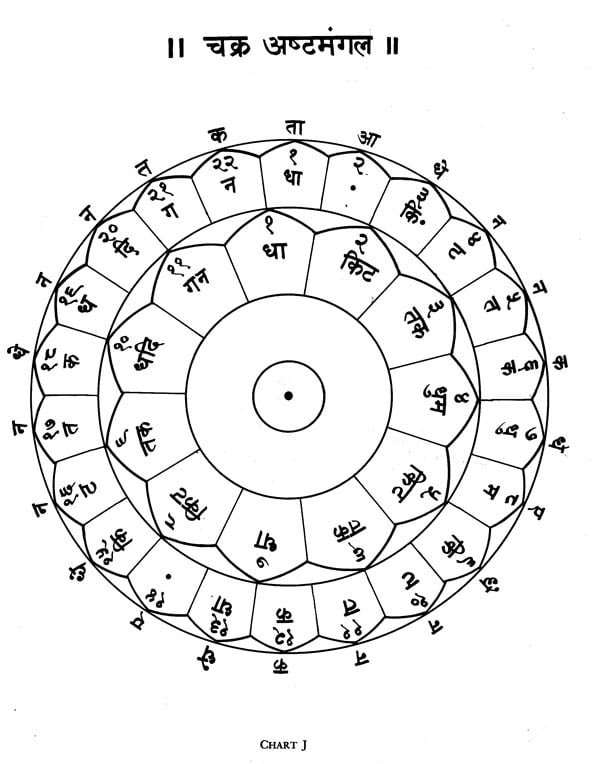
The Square and the Circle of the Indian Arts
Book Specification
| Item Code: | IDE409 |
| Author: | Kapila Vatsyayan |
| Publisher: | ABHINAV PUBLICATION |
| Language: | English |
| Edition: | 1997 |
| ISBN: | 8170173625 |
| Pages: | 195 (B & W Illus: 32, Figures: 82) |
| Cover: | Hardcover |
| Other Details | 11.4" X 8.8" |
| Weight | 930 gm |
Book Description
Preface
It was with some trepidation that I had handed over the manuscript of the Square and the Circle of the Indian Arts to the first publisher Roil Books. I was keenly aware of the unconventional if not unusual approach, despite the fact that at one level this was a logical development of my earlier research, specially as reflected in Classical Indian Dance in Literature and the Arts. As distinct from a interdisciplinary methodology amongst the arts, an attempt was being made here to identify the primary sources which provided the fundamental concepts and the integrated vision. Also the investigation was no longer confined to the discipline of the arts instead it was being extended t field seemingly as far apart as metaphysics, speculative thought, ritual on the one hand to traditional medicine understanding of the body system, mathematics particularly early geometry and early trigonometry. The artistic manifestation appeared to me to encapsulate through a chiseled language of form the metaphysical, physical, abstract and concrete, the universal and local simultaneously. A multilayered concurrency was distinctive. No longer could one confine oneself to the establishment of chronologies, dates, or identification of patrons. Nor could a one to one relationship be established between a text creative or critical of a particular period and an architectural monument, a sculptural or pictorial image, a kinetic sequence or musical melody. The dynamics of the interdisciplinary and multidisciplinary system was far more complex. Also, at the level of form some common fundamentals could be identified. These were the vehicles of communicating the core principles of a pervasive and an all-permeating world-view.
It is a matter of gratification that the book was well received by both art historians of great renown as also students and young researchers of architecture, sculpture, music and dance. For me, it has been particularly pleasing to receive queries and comments from many who are beyond the pale of the history of the arts. Since there appears to be continued in the book, I agreed to the publication of a second edition of the original book rather than considerably revising and enlarging it. The latter would tantamount to writing a new book on the basis of my own research or more, journey of perceptions, as also taking cognizance of some very important publications during the last decade of my contemporaries.
I have chosen the former course after careful reflection. The original (first edition) presents a conceptual framework an examination of specific texts and select number of examples from the vast field of ritual performance as also architectural monuments and other arts. Even on a second reading it appeared to me that the first edition stands on its won, reflecting a specific if not distinctive point of view and a multidisciplinary methodology at a given moment in the field of art history. The work has to be situated in that period of the ninety eighties, no more and no less. The fact that it continues to draw interest after a lapse of decade and a half is confirmation on the felt need for alternate if not fresh approaches to the study of the Indian arts.
As is well known and mentioned above the study of the Indian arts ahd been and in some measure continues to be confined to the establishment of chronologies along a linear arrow of time. It is sought to trace the path Indian or a regional spatial framework. Alongside, a chief concern is to identify the distinctive features of particular schools or style within each genre. Although this is an essential prerequisite, obviously it can only serve as a beginning and not constitute the totality of comprehension of the experience, process and final aesthetic import of the work of art.
Happily in the last decade and a half a definitive turn has taken place. Now both more and different questions are being asked. While some art historians have attempted to investigate more sharply the socio-cultural dimensions others have drawn attention to morphology and structure. This is most evident in recent scholarship on Indian architecture to an extent in Indian sculpture. Some significant work has been done in analyses of narratives and imagery. A few scholars have probed deeper into the nature of the fundamental concepts, which constitute the essential common ground and the unitary vision which manifests itself in a multiplicity of expression across space and time. Indeed these fundamental concepts are common to not only the arts but also all other disciplines over a long period of history and at many levels of expression.
All this is welcome confirmation of some perceptions contained in the Square and the Circle. A perusal of recent scholarship convinced me that the slender framework provided in the book had the potential of serving as an alternate approach to the study of the Indian arts. The possibility of applicability to a vast area and different levels from the sophisticated to the simple was considerable if not near universal in the Indian tradition. Thus, it was best to republish the first edition without modifications and enlargements, so that the original framework could be accessible. Perhaps it is needless to ad that this framework is understandably limited to the exploration of only a few fundamental paradigms of thought and structure. The paradigm or metaphor of purusa is the focus. It is through this that notions of space and time relationship and interdependence of senses, body, mind, intellect and soul and explored. The concept or paradigm and metaphor gives rise to a language of abstract geometrical forms in all the arts. Although this is central and important as a term of reference in both thought and structure it is neither solitary nor insulated. The concept of Purusa itself has to be placed within a larger context and a cluster of other concepts. Research during the last decade had enabled me to identify other such concepts each intertwined and overlayed. Confirmation has also come from many more texts hitherto unpublished as also filed studies in living traditions. The After word gives a brief enumeration.
I hope the second edition of the Square and the Circle along with the remarks in the Afterword will perhaps stimulate further investigation and dialogue for comprehending the multilayered holistic system which continues to have validity despite the threat and phenomenon of fragmentation.
I am grateful to my colleagues Dr. T.A.V. Murthy, Dr. Sushma Zadoo Jatoo, Dr. Ashwani Kumar, Shri Dharam Vir Pandey and Shri Pawan Kalia for their invaluable assistance.
I should like to thank Abhinav Publications for taking the initiative in publishing the second edition with the permission of Roli Books, who have understandably moved to other avenues.
Introduction
For some years I have been concerned with the Indian notions of movement. My studies began with the practice of Indian dance, but soon I realized that Indian dance was not a mere matter of articulating the different limbs of the human body. I became conscious that Indian dance was the most chiseled expression of a larger and more complex background of an Indian world-view and its distinctive speculative thought. This demanded an exploration of the conceptual ideational background of Indian culture in general and the laws of 'movement' in particular.
I have thus come to the conclusion, rightly or wrongly, that dance, especially in the Indian context, cannot be viewed in isolation from the most significant framework of the philosophic thought and the psychical concerns of the Indian people. Naturally, I have been led to analyse the laws of movement from many points of view. This in turn has demanded an enquiry into many disciplines, some obviously related, and others which may appear 'distant' but are not really so.
My aim in these pages is an investigation of the concept of movement in space and time, without the help of rigid models drawn either from the western tradition or from the tacit acceptance of the findings of Indian traditional critical thought. The dangers of embarking on an enquiry without the help of established models and yardsticks of straitjacket disciplines are many and I am aware of these. However, I believe that it is necessary to re-explore the Indian tradition, and particularly the concepts of movement and thus of dance with a multi-pronged approach. This will naturally involve the use of several types of research methodologies, where a 'totality' is being explored and critically examined in all its multiple layers and varied dimensions. In recent years this has been called the holistic view but I have deliberately avoided this word here, as it is a highly contextual term to be wholly valid. My only assertion is that my attempt has been to look at the Indian tradition as an 'organic whole' where all dimensions of life are considered together in their essential relationship of interconnectedness and interdependence and overlayering. Speaking in modern terms it would appear that no one method, i.e. neither the purely historical, nor anthropological, nor the sociological, nor the philosophical provides us with complete answers or near answers for reconstructing the structure of the world view and its methodology of expression in different media. In the context of the much debated goals of life (the purusarthas) this would be tantamount to looking at them as interdependent and not exclusive categories. What is true of life and its goals is equally ture of the Indian artistic traditions, which have so far been considered within a chronological framework or as artistic activity under particular dynastic rules. At other times the Indian artistic traditions have been viewed only as expression of a mystical other-worldly concern, or contrarily as rigid mathematical formulate transmitted from one generation to another by the sheer weight of dead habit. The co-existence of all these factor both in time and space has hardly ever been considered. I have tried to look at the limited concepts of movement in space from a few if not all points of view.
Another reason for presenting this first attempt at investigating an aspect of the Indian tradition from these multiple points of view, is on account of my experience and belief that certain parts of India especially a region like Kerala, persevere in a very significant manner many aspect of Indian tradition, where many layers of 'time' co-exits and there is a plurality of forms which in other parts of India have become obliterated. Also, in regions like Kerala the textual traditions and the oral or non-literate traditions are equally powerful. Thus in archaeological terminology it may be said that regions like Kerala are excellent areas for conducting excavations, and for determining the sequence of strata vertically in time and studying a horizontal cross-section in space. In the present context, it is obviously the excavation of living traditions and not just of the material remains of the past.
Let me begin, then, with the ideational background of the Indian arts. I should like to avoid the more commonly used terms, 'philosophical' and 'sociological' background, in this frame of reference, as they are loaded contextual terms. Their use as equivalents for Indian concepts has been the cause of some confusion. I would thus like only to underline the fact that even the six darsanas (the 'philosophic systems) cannot be synonymous with the term philosophy in the Greek sense. Be that as it may, I only wish to point our that in this work the term 'speculative thought' has been used with purpose.
At no point am I taking the 'philosophic systems' as a basic frame of reference.
The reader may justifiably ask what relevance these preliminary remarks bear to movement is not restricted to the articulation of limbs of the physical body. However, let us begin with the body and see what are its possibilities. First and foremost is the basic physical fact of its verticality determined by gravitation. This vertically draws attention to the limitation of man on earth and also provides the basis of the relationship, which it can establish in the space above and around him. I am not using Sanskrit terminology here, nor drawing attention to be all-pervasive term akasa, but perhaps if one single moment were devoted to thinking about the common phenomenon of the standing Man then a whole cosmic world would open out. Added to this, is the first articulation with which I can make communication: by speech or words. And how exactly do I achieve this? I achieve this through the use of some physical organs but more through something which we generally call 'energy' or breath or prana. Further, all this on one level is rooted in physical time and if I so wish or desire I can relate this small limited articulation to a sense of more universal or cosmic time.
Thus the mere fact of my physicality determines certain possibilities of relationship with space outside and the relationship with space outside and the relationship with the self within. My purpose is to look at some features of the Indian tradition from the point of view of the biological realities which determine Man's relationship to space outside and the psychical processes which relate Man to time past and future. Both these concerns have given rise to a distinctive world-view, which we can call 'Indian'. This ideational background in turn determines concepts of 'movement', both in the cosmogony and with reference to the articulation of the limbs of the human body in space, in all the Indian arts.
Before I reach my particular subject of human movement in space I have necessarily to elucidate the large framework within which this enquiry needs to be conducted. For practical reasons I have been obliged to restrict myself to the single theme of man in space, always bearing in mind that this theme is one amongst many which need deeper investigation in order to examine certain deductions made in regard to Indian culture in general and the Indian arts in particular.
From the Jacket:
The Square and the Circle of the Indian Arts is a major contribution in Indian Art history. More than a book on the theories of arts, it has far-reaching implications for the way one thinks about the future of indology and art history. It provides a model to be emulated for inter-disciplinary research, not only between the arts but also the sciences and the arts.
The book begins by re-examining the imagery of the Vedas and the Upanisads, highlighting some aspects of early speculative thought which influenced the enunciation of aesthetic theories, particularly of Bharata in the Natyasastra. The next chapter introduces a new methodology of analysisng the rituals (yajna) as laid down in the Yajurveda and the Satapatha Brahmana, the best way to focus the relationship between the text and the practice. Four chapters follow - one each on drama (natya), architecture (vastu), sculpture (silpa), and music (sangita). Each presents some fundamental concepts of speculative thought, concerned with each of the arts and purposefully correlates these with actual examples both of the past and the present.
The afterward to this second edition remains an event not only because the book benefits from the works published since the first edition, but also because it presents the author's integral vision and her unique adventure into the boundaries of several disciplines. It demonstrates the efficacy of her earlier approach of investigating the imagery and the metaphors as basic to the discourse of the Indian tradition. She proposes a multi-layered cluster of concepts and metaphors, which enable one to uncode the complex multi-dimentional character of the Indian Arts. Also significantly she suggests a deeper comprehension of the relevance of the developments in the field of traditional mathematics and biology for the study of the language of form of the Indian Arts.
About the Author:
Kapila Vatsyayan artist and art historian is internationally acknowledged as the pioneer of evolving alternate models of research for establishing inter and intra-relationships of different domains of knowledge and creativity. Her own work moves from a deep understanding of the primary textual sources of the East and West, principally Sanskrit and English and a direct experiences of the arts as performer. It focuses attention on the inter-relationship of the concept and creative interpretation in architecture, sculpture, painting, music, and dance. The kinetic image enables her to delve deeper into the textual and oral sources and the fundamental metaphysics, which govern form and structure of the arts. She has convincingly drawn attention to the sacred geometry, which pervades all the Indian arts. As visualiser of the conceptual plan of the Indira Gandhi National Centre for the Arts, she leaps across many disciplines, questions the conventional boundaries and finally establishes several bridges of communication between traditional thought and modern science. This has resulted in many multi-disciplinary studies of space and time, nature and culture, man and society, Chaos and order. Her holistic integral vision is explicit in the volumes she has edited on these subjects.
Her first work, Classical Indian Dance in Literature and the Arts, is a milestone by experts the world over. This work was followed by many others including the definitive study of many others including the definitive study of Dance in Indian Painting, The Theoretical Basis of Asian Aesthetic Traditions; Traditional Indian Theatre: Multiple Streams; Six volumes on Gita Govinda; Bharata and the Natyasastra; and The Square and the Circle of the Indian Arts. She has edited the volumes on Concepts of Space: Ancient Modern published by the Indira Gandhi National Centre for the Arts, New Delhi.
| List of Illustrations | viii | |
| Preface to the Second Edition | xiii | |
| Preface to the First Edition | xv | |
| 1. | Introduction | 1 |
| 2. | The Speculative Thought | 5 |
| 3. | The Ritual of the Yajna | 21 |
| 4. | The Natyasastra | 37 |
| 5. | The Vastu-Purusa | 71 |
| 6. | The Silpa-panjara | 101 |
| 7. | The Sangita-Purusa | 143 |
| 8. | Conclusion | 153 |
| 9. | Afterword | 157 |
| Notes | 165 | |
| Bibliography | 171 | |
| Index | 175 |
